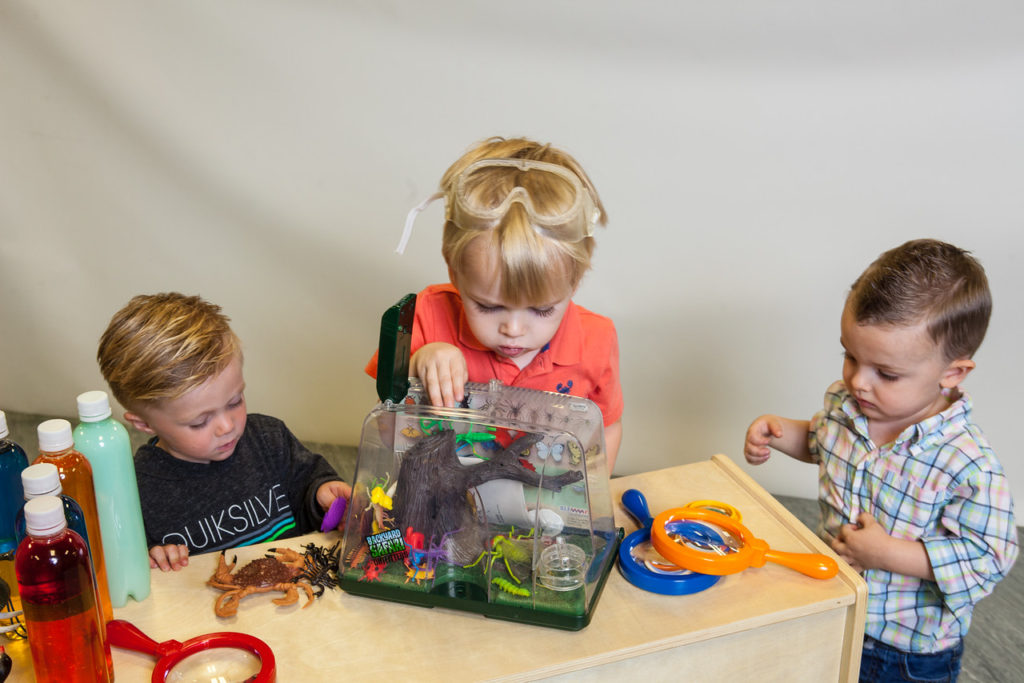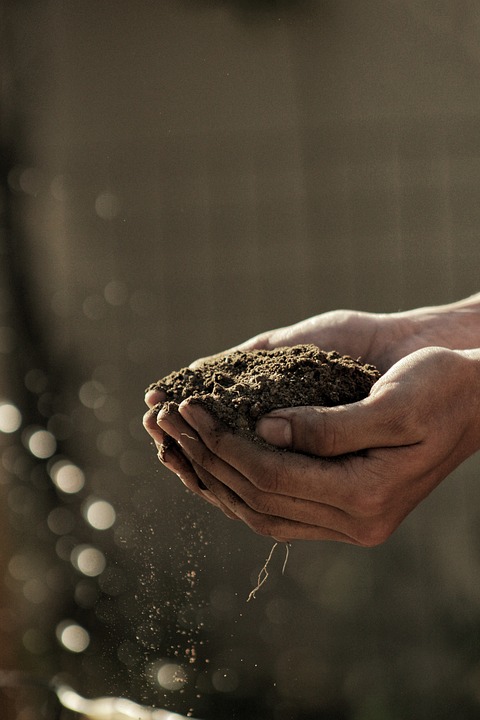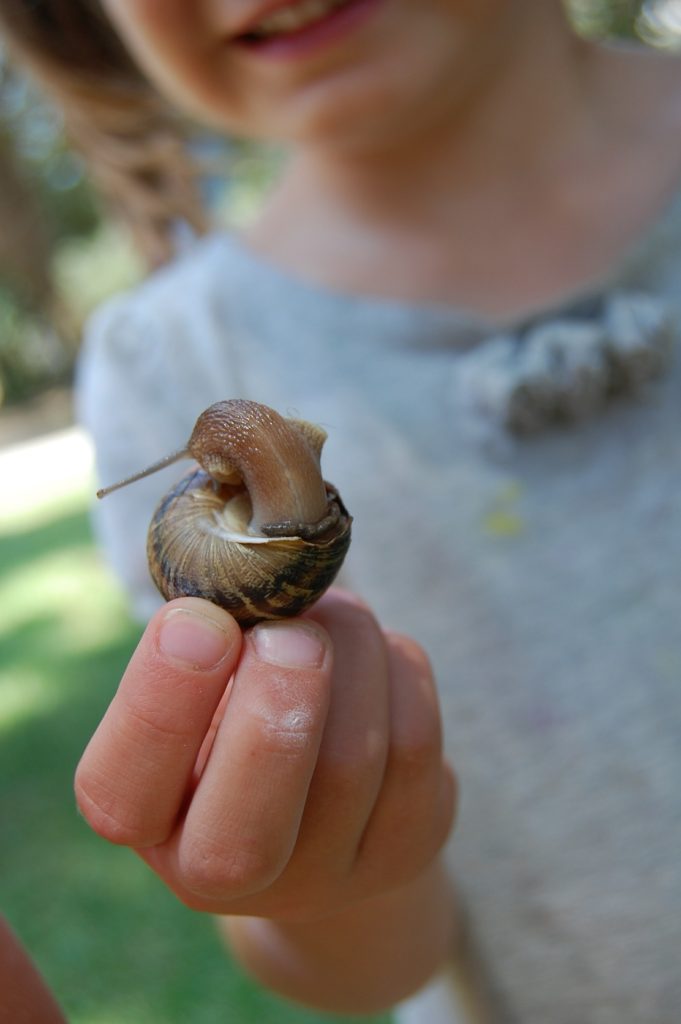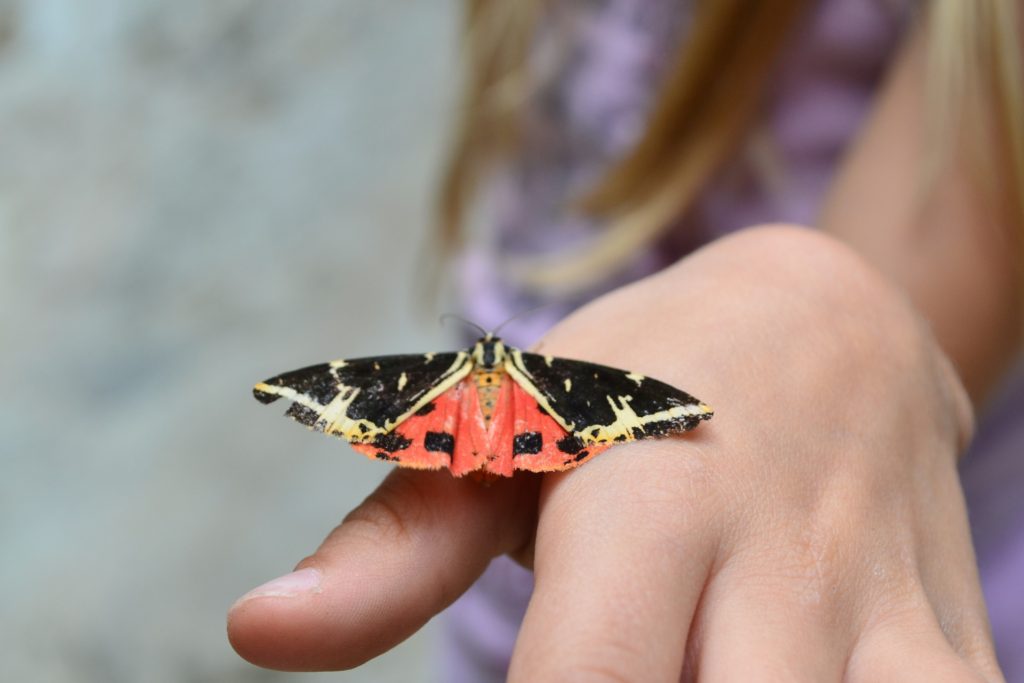Summer is here and how often do we hear the dreaded, “I’m bored” statement? School may not be in session, but learning adventures are right outside your backdoor. Just think of the safari awaiting a young inquisitive mind!
Roly-polies tucked away under the nearest stone. Beatles making their way through the jungle of grass. Mighty ant wars, a moving mosaic on the sidewalk. And don’t forget that tell tale sign of the sparkling trail left by that sneaky snail. All the backyard enthusiast needs is a plastic magnifying glass and a paper cup and she’s set!
The Dirt on Getting Dirty
But backyard science goes well beyond the ugly bug ball. Even smaller than those creeping crawlers are microorganisms that are also at work. Often as parents we are hesitant to let those little fingers and toes get all dirty.
“We want children to explore and to construct knowledge about their world, but sometimes we stifle this curiosity by trying to keep them safe–and clean.” (Paul Chesler, Instructor, Child Development and Education Division DeAnza Community College, Cupertino, California, Young Children. May 1996. p. 28)
Scientist Jack Gilbert, author of Dirt is Good: The Advantage of Germs for Your Child’s Developing Immune System, studies microbial ecosystems at the University of Chicago. In an interview with NPR, he shared that most parents are over washing and over sterilizing.
“It’s fine to wash their hands if there’s a cold or a flu virus around, but if they’re interacting with a dog, and the dog licks their face, that’s not a bad thing. In fact that could be extremely beneficial for the child’s health,” Gilbert shared. According to his studies, an increased exposure to germs can actually boost immunities and decrease allergies. So let him play in some of that “good clean dirt.”
The Nature of Nature
The natural world used to be all around humanity, but because of urbanization, few children have access to nature. When we think of sending children out to play, we think of slides and swings. However, according to studies, “Children prefer outdoor places that allow personal investigation.” (Ruth Wilson, Fostering A sense of Wonder During the Early Childhood Years. 1993. p.131)
By nature, children are drawn to nature. They need to connect with the world around them because they are a part of it. Giving them the opportunity to explore the backyard and beyond builds interest and curiosity, as well as allowing the whole child to grow in his natural surroundings.
Wonder as You Wander
Wonder is part of the joy of childhood and asking questions is paramount to wondering. “As teachers [and caregivers] we may often feel the impulse to simply respond with answers, but if we let go of our image as suppliers of answers, we too can become immersed in the act of wonderment” writes Michael Elsohn Ross, author of Sandbox Scientist–Real Science Activities for Little Kids. (Young Children. March 2000. p. 12)
Asking questions is instinctive for children, but we can take learning to a higher level as we ask questions with them. How are our senses affected by what we are experiencing? What is happening? Why and how is it happening?
Discovery through our questions not only develops a scientific observer, it develops the skills of a lifelong learner who loves to explore and discover.
8 Backyard Science Adventures
Here are a few ideas for some exciting exploration:
Field Journal- Have your child document the question of the day. Here are a few to get you started. Drawing pictures of her experiences not only helps with observation, but increases language, small motor, and art skills as well.
- What do they see, smell, hear, touch? Can you describe it?
- What is the weather like? How was it the same/different from yesterday?
- How many animals or insects can they find? What were they doing?
- How did the ant measure compared to the butterfly?
- What plants can they find? What are the parts of the plants?
Theme Walk- With or without a backyard, we can all go for a short walk. Add purpose to your walk with a theme. Look for colors, shadows, footprints, signs of the season, living and nonliving, puddles, etc.Bubbles and Wind- We all know how much excitement bubbles bring to a summer day. Make it scientific with a straw! Which way is the wind blowing? Can you make the bubbles move with your own wind as you blow them with a straw? What about a paper fan?
Outdoor Scavenger Hunt- Give him a paper sack and have him gather a list of nature items: pine needle, flower, small pebble, leaf, piece of bark, stick, etc. Give him the opportunity to share his findings with the family.
Make a Birdfeeder- At UDA Creative Arts Preschool we make a simple birdfeeder with a string, a pinecone, some peanut butter and birdseed. Tie the string around the pinecone so it can hang on a branch. Your preschooler can cover the pinecone in peanut butter and then roll it in birdseed, and voila! Hang it in the tree and watch over the next few days as the seed disappears.
Plant a Garden- This activity takes more planning, but learning the science of seed to fruit is a labor of love. Your child will learn responsibility as she waters the plant and watches it grow. And what better way to develop a love for vegetables than growing your own? Pots can be used if a garden is not available.
Create a Habitat- Or just study one. Where does the spider live, and what does it need to survive? How about the worm? Ant farms can be fun to see how the ants live under the soil, then study what they are doing above the ground. A beetle or caterpillar can survive inside a plastic cup with some leaves for a day in the shade.
Explorer Tool Box- By giving your child tools and questions, they can use their own imaginations to explore; but just in case they are too bored, here are a few ideas to get started.
- Plastic Magnifying Glass- What can she find on the bark, leaves, in the grass and dirt?
- Trowel and Bucket- What is below the surface?
- Plastic Tweezers- Great for small motor skills! What does the other side of the leaf look like? Can they pick up that little rock?
- Ruler- Which leaf is longer? How long is the worm? How far did the snail go?
- Paper Cups- Playing in water can be hours of entertainment, or create a habitat for an insect for studying.
- Notebook and Pencil- This is a great way for them to express their data and findings through art.
- Chalk- Trace, measure, and describe on the sidewalk!
- Plastic Tube or PVC Pipe- How does the rock go through the tube compared to the leaf or a blade of grass? What about water? How about wind?
- Straw- Can they move the bubbles in the air by blowing them? What about a leaf? A rock? (Make sure your child is old enough to know the difference between blow and suck.And if you think these backyard ideas are fun, you should see how learning is fun in our classrooms! Come visit us for a free tour at UDA Creative Arts Preschool, the premier preschool in Salt Lake. For more information, call us at (801) 523-5930.
Written by: Elsje Denison




